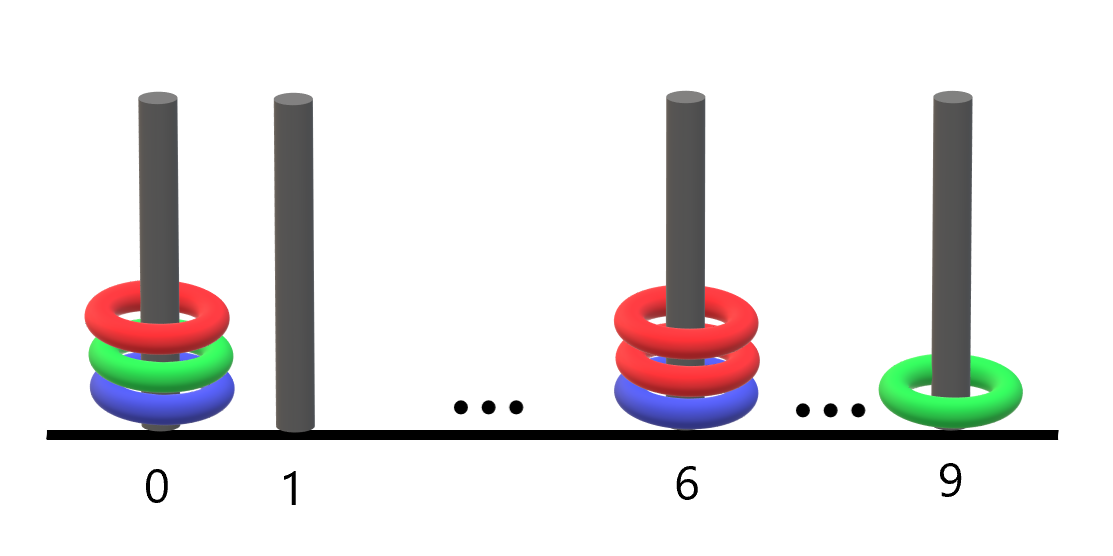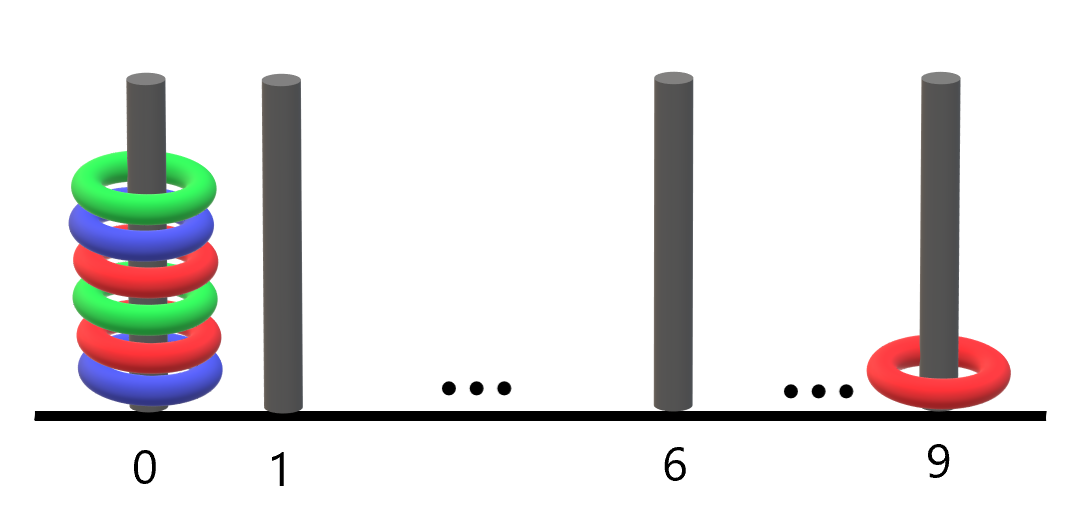2103. Rings and Rods
Description
There are n rings and each ring is either red, green, or blue. The rings are distributed across ten rods labeled from 0 to 9.
You are given a string rings of length 2n that describes the n rings that are placed onto the rods. Every two characters in rings forms a color-position pair that is used to describe each ring where:
- The first character of the
ithpair denotes theithring's color ('R','G','B'). - The second character of the
ithpair denotes the rod that theithring is placed on ('0'to'9').
For example, "R3G2B1" describes n == 3 rings: a red ring placed onto the rod labeled 3, a green ring placed onto the rod labeled 2, and a blue ring placed onto the rod labeled 1.
Return the number of rods that have all three colors of rings on them.
Example 1:
Input: rings = "B0B6G0R6R0R6G9" Output: 1 Explanation: - The rod labeled 0 holds 3 rings with all colors: red, green, and blue. - The rod labeled 6 holds 3 rings, but it only has red and blue. - The rod labeled 9 holds only a green ring. Thus, the number of rods with all three colors is 1.
Example 2:
Input: rings = "B0R0G0R9R0B0G0" Output: 1 Explanation: - The rod labeled 0 holds 6 rings with all colors: red, green, and blue. - The rod labeled 9 holds only a red ring. Thus, the number of rods with all three colors is 1.
Example 3:
Input: rings = "G4" Output: 0 Explanation: Only one ring is given. Thus, no rods have all three colors.
Constraints:
rings.length == 2 * n1 <= n <= 100rings[i]whereiis even is either'R','G', or'B'(0-indexed).rings[i]whereiis odd is a digit from'0'to'9'(0-indexed).
Solutions
Solution 1: Bit Manipulation
We can use an array \(mask\) of length \(10\) to represent the color situation of the rings on each rod, where \(mask[i]\) represents the color situation of the ring on the \(i\)th rod. If there are red, green, and blue rings on the \(i\)th rod, then the binary representation of \(mask[i]\) is \(111\), that is, \(mask[i] = 7\).
We traverse the string \(rings\). For each color position pair \((c, j)\), where \(c\) represents the color of the ring and \(j\) represents the number of the rod where the ring is located, we set the corresponding binary bit of \(mask[j]\), that is, \(mask[j] |= d[c]\), where \(d[c]\) represents the binary bit corresponding to color \(c\).
Finally, we count the number of elements in \(mask\) that are \(7\), which is the number of rods that have collected all three colors of rings.
The time complexity is \(O(n)\), and the space complexity is \(O(|\Sigma|)\), where \(n\) represents the length of the string \(rings\), and \(|\Sigma|\) represents the size of the character set.
1 2 3 4 5 6 7 8 9 | |
1 2 3 4 5 6 7 8 9 10 11 12 13 14 15 16 17 18 19 20 21 | |
1 2 3 4 5 6 7 8 9 10 11 12 13 | |
1 2 3 4 5 6 7 8 9 10 11 12 13 14 15 | |
1 2 3 4 5 6 7 8 9 10 11 12 13 14 | |
1 2 3 4 5 6 7 8 9 10 11 12 13 14 15 16 17 18 19 20 | |
1 2 3 4 5 6 7 8 9 10 11 12 13 14 15 16 17 18 19 20 21 22 23 24 25 | |
Solution 2
1 2 3 4 5 6 7 | |




